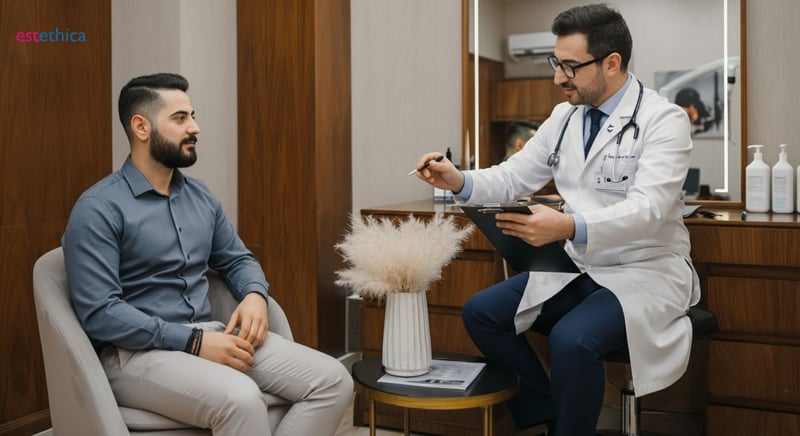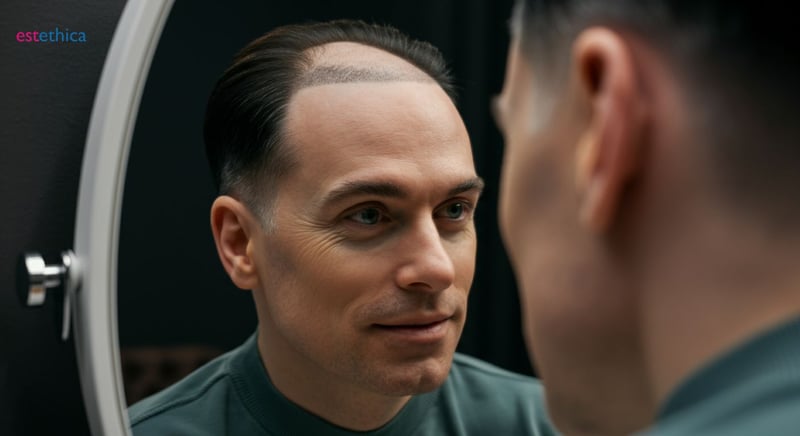Unlocking Hair Transplant Secrets: Your Ultimate Guide
Uncover the secrets to a successful hair transplant and regain confidence with expert insights and advanced techniques.
Welcome to the ultimate guide on hair transplantation, where we delve into everything you need to know about achieving fuller, natural-looking hair. Hair loss can be a daunting experience, but modern techniques in hair transplant surgeries offer hope and lasting results. In this comprehensive guide, we will explore cutting-edge methods used in hair restoration, the details of undergoing a hair transplant surgery, and the critical steps in post-operative care to ensure optimal recovery. Whether you're seeking a solution for thinning hair or curious about hair grafting, this guide is designed to provide all the information you need.
Understanding Hair Transplantation: What You Need to Know
Exploring Hair Transplant Techniques
Hair transplantation involves several techniques, each tailored to specific needs. The most common method is Follicular Unit Extraction (FUE), where individual hair follicles are extracted and transplanted. This technique is favored for its minimal scarring and natural results. Another popular method is Follicular Unit Transplantation (FUT), which involves removing a strip of scalp from the donor area. This method can be more efficient for covering larger areas of baldness.
Key Benefits of Hair Transplantation
- Natural-looking results with advanced techniques like FUE and FUT.
- Permanent solution to hair loss, unlike temporary treatments.
- Boosts confidence and improves self-esteem.
These benefits make hair transplantation a compelling option for those seeking long-term hair restoration. For more insights, explore Hair Transplant Insights: Transform Your Hairline Today.
Understanding the Hair Transplant Process
- Consultation: Assessing hair loss and determining the best technique.
- Preparation: Local anesthesia is applied to ensure comfort.
- Transplantation: Follicles are carefully placed in the recipient area.
Each step is crucial for achieving optimal results. The process is designed to be minimally invasive, allowing for a quicker recovery time.

Exploring Hair Restoration Techniques: From FUE to SMP
Innovative Hair Restoration Methods
The landscape of hair restoration has transformed with advanced techniques like Follicular Unit Extraction (FUE), Direct Hair Implantation (DHI), and Scalp Micropigmentation (SMP). FUE is renowned for its precision, extracting individual follicles for implantation, minimizing scarring. DHI, utilizing a pen-like tool, allows for direct graft placement, enhancing accuracy. Meanwhile, SMP offers a non-surgical approach, tattooing tiny dots to mimic hair follicles, creating an illusion of fuller hair.
Understanding the Cost Factors
- Technique Choice: Different methods like FUE, DHI, or SMP influence the overall cost.
- Clinic Location: Prices can vary significantly based on geographic location.
- Extent of Treatment: The size of the area needing restoration affects the price.
While costs are a consideration, the choice of technique and clinic should prioritize quality and expertise. It's essential to research and consult with professionals to determine the best approach for individual needs.
Advantages of Modern Hair Restoration
- Minimal Scarring: Techniques like FUE and DHI offer less visible scarring compared to traditional methods.
- Natural Appearance: SMP provides a realistic look, especially for those not opting for surgical methods.
- Versatility: Suitable for various hair types and degrees of hair loss.
These advancements in hair restoration techniques offer individuals a range of options tailored to their specific needs, ensuring both aesthetic satisfaction and improved self-confidence.

Navigating Hair Transplant Surgery: What to Expect
Preparing for Your Hair Transplant Journey
Before undergoing hair transplant surgery, thorough preparation is essential. This includes consultations with specialists to assess your hair loss and determine the most suitable technique. Pre-operative instructions are crucial to ensure the procedure's safety and success. For instance, patients are often advised to avoid certain medications and alcohol prior to surgery.
Steps During Hair Transplant Surgery
- Local Anesthesia: The scalp is numbed to ensure a pain-free experience.
- Follicle Extraction: Hair follicles are meticulously harvested from the donor area.
- Graft Placement: The extracted follicles are carefully transplanted to the recipient area.
The entire process can take several hours, depending on the extent of hair loss and the number of grafts required. This meticulous approach ensures natural-looking results and minimal scarring.
Key Considerations for Post-Surgery Care
- Follow post-operative care instructions to promote healing and graft survival.
- Avoid strenuous activities to prevent complications during recovery.
- Attend follow-up appointments to monitor progress and address any concerns.
Proper post-surgery care is vital for achieving the best outcomes. Patients should adhere to their surgeon's guidelines to ensure a smooth recovery and optimal hair restoration results.

Post-Transplant Care: Ensuring Optimal Recovery
Essential Post-Operative Practices
Post-operative care is a critical phase in the success of a hair transplant. Patients must adhere to specific guidelines to ensure optimal recovery and hair growth. Keeping the scalp clean is paramount, as it prevents infections and promotes healing. Avoiding direct sunlight is also crucial, as UV rays can damage sensitive scalp tissues. Additionally, using prescribed medications helps reduce swelling and discomfort, facilitating a smoother recovery process.
Steps to Enhance Recovery
- Follow Doctor's Instructions: Adhere strictly to the post-operative care plan provided by your surgeon.
- Attend Follow-Up Appointments: Regular check-ups with hair care specialists help monitor progress and address any concerns.
- Maintain a Healthy Lifestyle: Proper nutrition and hydration support the healing process and promote hair growth.
These steps are essential for minimizing complications and ensuring the success of the hair transplant. By following these guidelines, patients can achieve the best possible outcomes and enjoy the benefits of their new hair.
Key Factors for Successful Recovery
- Patience: Hair growth takes time, and results may not be immediately visible.
- Gentle Hair Care: Use mild shampoos and avoid harsh styling products to protect new grafts.
- Stress Management: Reducing stress can positively impact hair growth and overall recovery.
By focusing on these key factors, patients can enhance their recovery experience and achieve long-lasting results. It's important to remember that each individual's recovery journey is unique, and patience is essential for seeing the full benefits of a hair transplant.
Innovative Hair Restoration Techniques: FUE and DHI
Comprehensive Post-Transplant Care for Optimal Recovery
Frequently Asked Questions
What is a hair transplant and how does it work?
What are the latest hair transplant techniques available?
Is hair transplant surgery safe?
How long is the recovery time after a hair transplant?
What factors should be considered when choosing a hair transplant clinic?
Experience the pinnacle of aesthetic and healthcare services with estethica. Call now for your free consultation and let our expert team guide you towards a healthier, more beautiful you.
📞 Call for Your Free Consultation